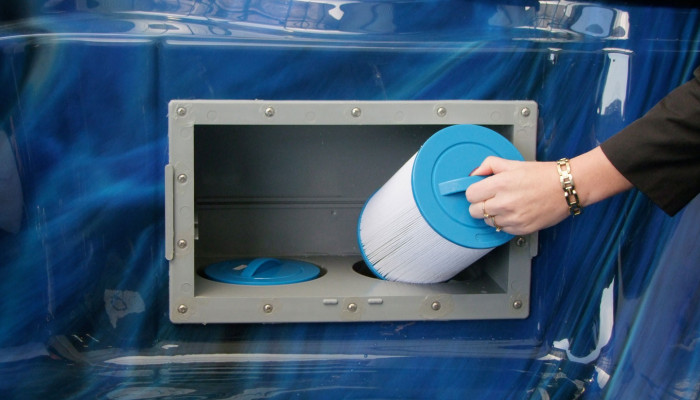A Simplified Spa Maintenance Guide
18 Aug, 2023
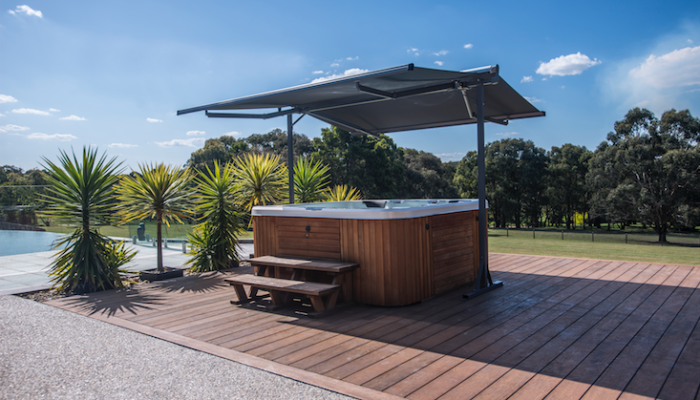
Spas and swim spas are a fantastic source of relaxation, entertainment and fun! Plus, they offer a great many health benefits, including reducing muscle and joint pain, supporting recovery from sports injuries and helping improve performance through hydrotherapy. The key to getting all these wonderful benefits is giving your spa the proper maintenance and care it deserves.
But, with so much conflicting information out there, we understand that it can be confusing and overwhelming to figure out what exactly needs to be done. We got you.
For close to two decades, mySpa, has been supplying Sydney with premium Australian-made and owned spas, so we know more than a thing or two about upkeep and maintenance. This detailed guide has greatly simplified the spa maintenance process covering all the below important points;
- The 3 Essentials Of Spa Maintenance
- How Often Should You Maintain A Hot Tub? Weekly, Monthly & Yearly Spa Maintenance Schedules
- Building Your Spa Maintenance Kit
- Spa Maintenance Service And Repair - Who Do I Call?
- How Much Does A Spa Cost To Run In Australia?
- A Recap - All The Key Points To Remember About Spa Maintenance
Once you've gone through all the above, you'll be well-equipped to give your spa the best care possible. But before we start, make sure to bookmark this guide on your browser - it'll be your best friend when it comes to spa maintenance!
The 3 Essentials Of Spa Maintenance
Balancing
The first and most important step is to balance the water in your spa, which boils down to maintaining stable levels of;
- pH
- total alkalinity
- calcium hardness
When these three things are maintained at just the right levels, the spa water becomes a delightful and soothing environment and will have a gentle impact on the skin and eyes of the users.
What Is The Ideal Ph For Spa Water?
The ideal pH level of your spa water is one that closely matches your skin's natural pH, typically falling within the range of 7 to 7.8 on the pH scale of 0 to 14. Avoid extreme fluctuations that lead to acidic water (pH 0 to 6) or alkaline water (pH 8 to 14), as these can make your spa experience less fun.
How To Balance Spa Chemicals - Drain Your Spa!
Draining your spa regularly is the key to balancing the chemicals in the water and removing any build-up of hard calcium scale. We recommend draining one-third of your spa water every three months and refreshing it with new water.
Sanitising - Spa Chemical Maintenance
Another significant step in keeping your spa well-maintained is to sanitise the water regularly. To do so, you'll need to regularly check the water's chemistry using a spa test strip or test kit.
After looking at the results, you'll know how much of each chemical need to be added. Then check your owner's manual for specific details on your spa's water chemistry because it can change from spa to spa.
This is why you need to sanitise your spa water,
- Sanitising wipes out bacteria, fungi, and other yucky stuff that can harm our health.
- Not only does it eliminate those bad contaminants, but it also zaps them with its oxidising power.
- And the best part? Its protective shield lingers, keeping those nasty intruders away and ensuring they don't come back for a surprise attack!
Where To Buy Spa Chemicals
The best place to buy spa chemicals is through spa experts like mySpa Sydney and licensed dealers like Sapphire Spas. Although buying a supermarket version of the needed chemicals may seem like a cost-saving idea, it'll only do more harm than good. Though the supermarket product may look like it'll do the job, it generally won't be designed to match the functions of a spa pool. So, instead of risking any damage to your spa as well as your skin, it's best to purchase high-quality chemicals from the experts.
Visit the mySpa Sydney store in Castle Hill
Oxidising
Oxidising or 'shocking your spa' eliminates unwanted materials like makeup, sweat, and bugs that can contaminate your spa water. They do this by breaking down the contaminant and releasing it into the air.
Next, the spa shock reactivates the sanitiser, typically chlorine, to continue its work in getting rid of harmful organisms. Oxidisers are also used to counteract chlorine, when the levels go too high.
How Often Should You Maintain a Hot Tub? Weekly, Monthly And Yearly Spa Maintenance Schedules
Having a consistent spa maintenance schedule is crucial to keep your spa running smoothly. Here's how much maintenance is involved in owning a spa pool - don't be overwhelmed by the long list; some of these check-ups only take about five minutes!
Daily Spa Maintenance - Just A Quick Peek
Here are a few things to check every day:
☑ The fence around the spa is secure - this is a legal requirement!
☑ The spa cover is on and is secure without any damage
☑ Water temperature is stable
Three Times A Week Spa Maintenance - Takes Only 5 To 10 Minutes
☑ Test the water to see if PH and alkalinity levels are good
☑ Check sanitiser by testing chlorine levels - add more if needed
☑ Wipe off the dust - wipe above the waterline with a clean rag
Weekly Spa Maintenance - Set Aside About 15 - 20 Minutes
The 3-4 Month Spa Maintenance - Invest A Few Hours To Avoid Serious Repairs
Seasonal Spa Maintenance
Annual Spa Maintenance
☑ Get a professional check-up and service - book one right here. ☑ Flush plumbing to get rid of bacteria and biofilm ☑ Inspect hardware and wiring ☑ Check spa cover for any signs of cracks, mould and water absorption
Building Your Spa Maintenance Kit
What you need to keep your spa in top shape:
1. A Spa Chemical Kit
You can get a spa water testing kit or chemical kit from mySpa Sydney, which will tell you when it’s time to drain the water based on the total number of dissolved solids in the water.
2. A Spa Vacuum
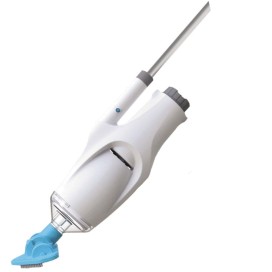
Make cleaning your spa pool of debris and sediment easy with a handheld spa vacuum. Requiring no electricity, a spa vacuum uses the power of physics to lift out and filter debris that your spa filters may not be able to reach.
More details about spa vacuums.
3. Spa Umbrella
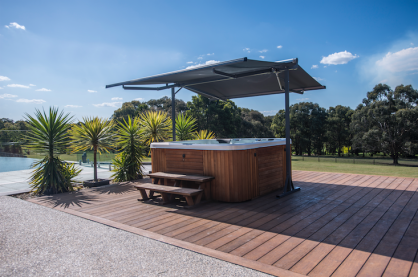
A spa umbrella not only adds an element of style to your spa pool but it also makes your spa stay durable in different weather conditions.
4. Spa Covers And Cover Lifters
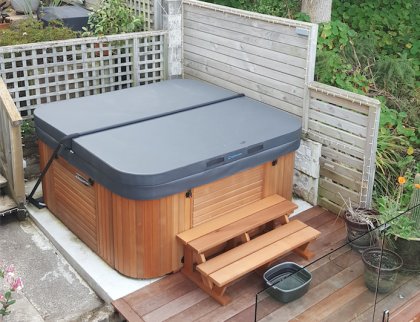
Cover lifters are a must-have spa accessory. Spa pool covers can be heavy, so we recommend installing a cover lifter to assist in removing and holding the cover while it's not in use.
More details about covers and lifters.
Spa Maintenance Service And Repair - Who Do I Call?
Keep your spa pool running smoothly and safely, by having a professional check and maintain it annually or when needed to prevent any major damage or repairs in the future. Your dealer is the first point of contact for any questions or concerns you may have. Click here to request a repair or professional maintenance visit.
How much does a spa cost to run in Australia?
Understanding the cost of running a spa is important for effective budgeting. Based on a 2022 analysis by Sapphire Spas, here's a breakdown of the cost of running a spa in Australia. Please note that this is only an estimate and may vary depending on inflation, energy prices and other factors.
- Filter Changes: $50-$60 per filter pod replacement.
- Sanitization Consumables: Replacement lamps for UV-C and ozone systems cost $125, while water flow check valve replacements cost $20.
- Heating (and/or Cooling): Estimated between $1.32 - $7.20 per day, depending on usage.
- Filtration and Sanitization: Running the Clearzone system on a typical spa pool costs about 73kWh or just $22 per year (at $0.30/kWh).
- Pumps, Circulation, and Operation: Roughly $0.82 to $2.2 per hour or more, depending on usage.
- Chemical Use: Approximately $150-$200 per year for testing and water maintenance chemicals.
A Recap - All The Key Points To Remember About Spa Maintenance
- A spa or swim spa can provide relaxation, entertainment, and health benefits, but proper maintenance is essential.
- Balancing the water in a spa involves maintaining stable levels of pH, total alkalinity, and calcium hardness.
- Sanitising the water regularly eliminates harmful bacteria and other contaminants.
- Oxidising or "shocking" a spa removes unwanted materials such as makeup and sweat.
- Different levels of maintenance are needed daily, weekly, every few months, seasonally, and annually.
- A spa maintenance kit should include a chemical or water testing kit, a spa vacuum, a spa umbrella, and a cover lifter.
- Professional maintenance and repairs from your dealer are recommended.
- The estimated cost of running a spa in Australia includes filter changes, sanitisation consumables, heating and/or cooling, filtration and sanitisation, pumps and circulation, and chemical use.
Remember to bookmark this guide so you can keep coming back to it whenever you’re ever in doubt about how to properly maintain your spa. Ready to look at spas? Explore our swim spa, spa and plunge pool collection. Happy soaking!

